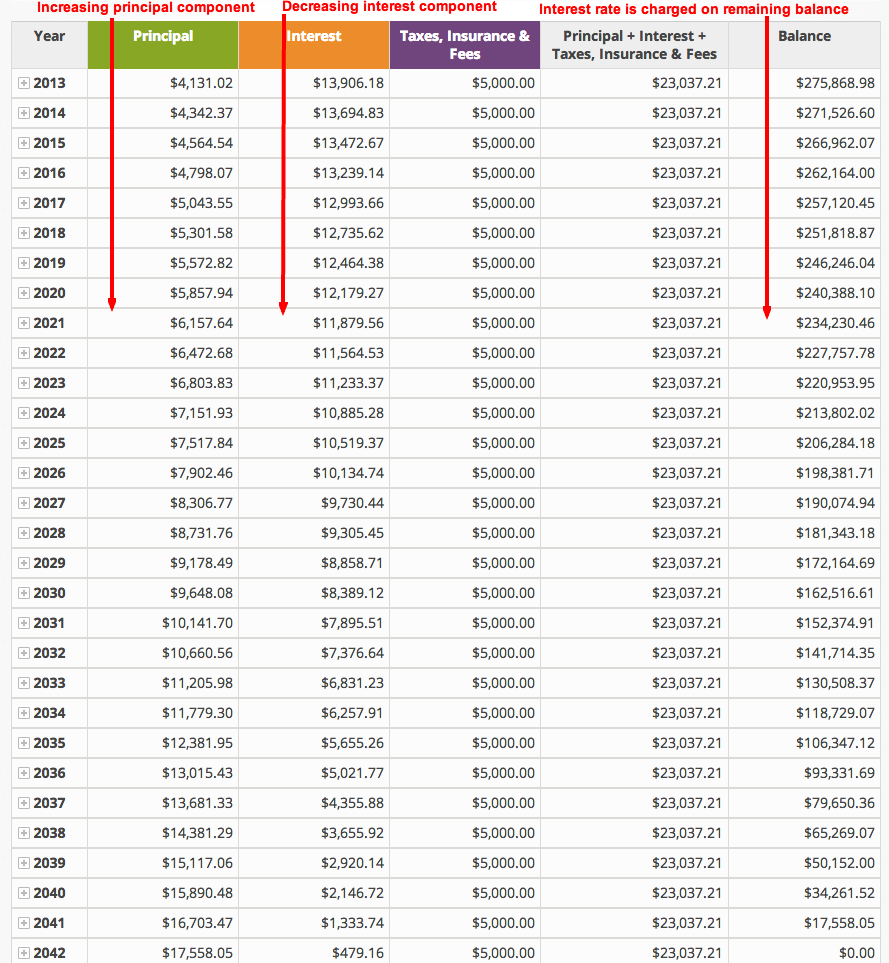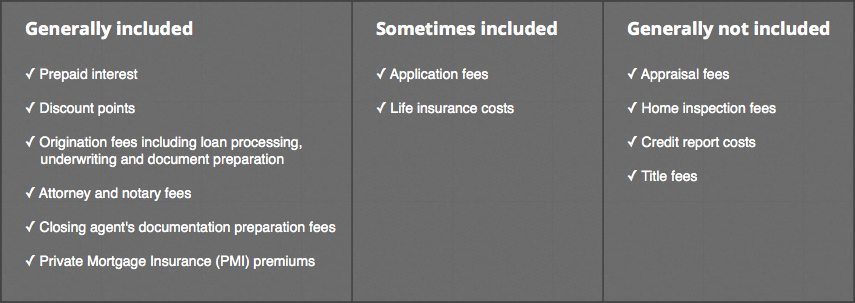When you apply for a mortgage loan, the lender is required by the federal ‘Truth in Lending Act’ to tell you both the interest rate and the annual percentage rate (APR). This enables borrowers to know the true cost and perform apples to apples comparison of loan offers by competing lenders. Your monthly payment, however, is based on the interest rate of the loan.
What is Mortgage Rate?
Mortgage interest rate is the cost of borrowing money. It determines your periodic (monthly, bi-weekly etc.) payment amount towards your mortgage. The mortgage interest rate can either remain fixed for the entire mortgage term or vary with a benchmark interest rate at certain pre-defined periods. At a macro level, the interest rate varies depending on various global economic factors such as inflation, unemployment rate and economic growth. At a micro level, it varies based on your credit score, down payment, loan type (fixed or variable) and loan tenure.
For a fully amortizing loan, each mortgage payment includes the principal and the interest components. It is important to understand that you pay interest only on the unpaid portion of the mortgage. For this reason, mortgage payments start off with a higher interest component initially and it decreases gradually. To put it another way, each successive payment goes to reduce more of the principal loan amount. Refer to the amortization schedule generated by the mortgage calculator.

The sum total of all mortgage payments over the mortgage term minus the principal amount is the total interest amount you pay towards your mortgage.
total interest = (periodic mortgage payment X number of payments) – mortgage principal amount
What is the Annual Percentage Rate (APR)?
Lenders charge more than just the interest rate on the mortgage. The APR also factors in one-time costs and fees associated with borrowing. The APR, which is expressed as a yearly percentage rate, represents the true cost of your mortgage loan after taking into account the mortgage interest rate plus the fees and costs that you have to pay when buying a home. These can include prepaid interest, discount points, origination fees, PMI premiums and other closing costs. The APR is a more complete measure that reflects the net effective cost of your loan on a yearly basis. It can be rounded up or down to the nearest one-eighth of a percentage point by the lender.

Example 1
| Mortgage Amount | Interest Rate | Amortization Period | Costs | Monthly Payment | APR | |
| Lender-A | $200,000 | 5% | 30 | $2000 | $1074 | 5.09% |
| Lender-B | $200,000 | 5% | 30 | $5000 | $1074 | 5.22% |
In the above example, the interest rates and hence the monthly payments on both the mortgages are the same, i.e., $1074. After costs, you would receive only $198,000 from Lender-A and $195,000 from Lender-B. This implies that you are required to pay Lender-A $1074 per month for $198,000 for an APR of 5.09%. Similarly you would pay Lender-B $1074 per month for $195,000 for an APR of 5.22%. You can easily choose the better offer without even looking at the APR in this case.
Example 2
| Mortgage Amount | Interest Rate | Amortization Period | Costs | Monthly Payment | APR | |
| Lender-A | $200,000 | 4.85% | 30 | $6500 | $1055 | 5.13% |
| Lender-B | $200,000 | 5% | 30 | $2000 | $1074 | 5.09% |
| Lender-C | $200,000 | 4.9% | 30 | $4000 | $1061 | 5.07% |
In this example, however, you will need the APR to decide between competing offers because of the differing interest rates, monthly payments and costs. A lower interest rate or monthly payment can be misleading without the APR information.
Limitations of the APR
Two identical loans may have different APRs because the fees one lender uses to calculate the APR may differ from what another lender uses. Lenders have some discretion to choose whether or not certain fees and costs are part of the APR calculation, so you may have to look more closely when comparing loan offers.
For identical loans, your prepaid interest – and hence the calculated APR – may vary depending on when you close your purchase (or refinance) transaction. Closing later in the month will decrease the prepaid interest.
Calculating APRs on ARMs differs depending upon whether your initial rate is fully indexed or if it is discounted or premium. Don’t be surprised if you see the APR lower than the mortgage rate for ARMs. To calculate the APR on ARMs after the fixed rate period, lenders are required to use the rate that would be produced if the loan were to adjust at the time it is offered, and to assume that rate would stay constant for all the years after the initial period.
The APR should only be used to compare similar loan products with same mortgage amount and tenure. For example, you shouldn’t compare the APR of a 30-year fixed rate mortgage to that of 5/1 ARM.
A lower APR does not necessarily mean it’s better of the two loan offers. You should also consider how long you plan to remain in the loan. The APR assumes that you will be keeping the mortgage for the entire term. If this is not the case, the upfront costs can increase the true cost of your loan. Let’s revisit the above example with the assumption that you plan to sell your home within 5 years. In this case (Example 3), the loan offer with the lowest APR turns out to be the more expensive than the offer with highest interest rate.
Example 3
| Mortgage Amount | Interest Rate | Amortization Period | Costs | Monthly Payment | APR | 5-year APR | |
| Lender-A | $200,000 | 4.85% | 30 | $6500 | $1055 | 5.13% | 6.17% |
| Lender-B | $200,000 | 5% | 30 | $2000 | $1074 | 5.09% | 5.41% |
| Lender-C | $200,000 | 4.9% | 30 | $4000 | $1061 | 5.07% | 5.71% |